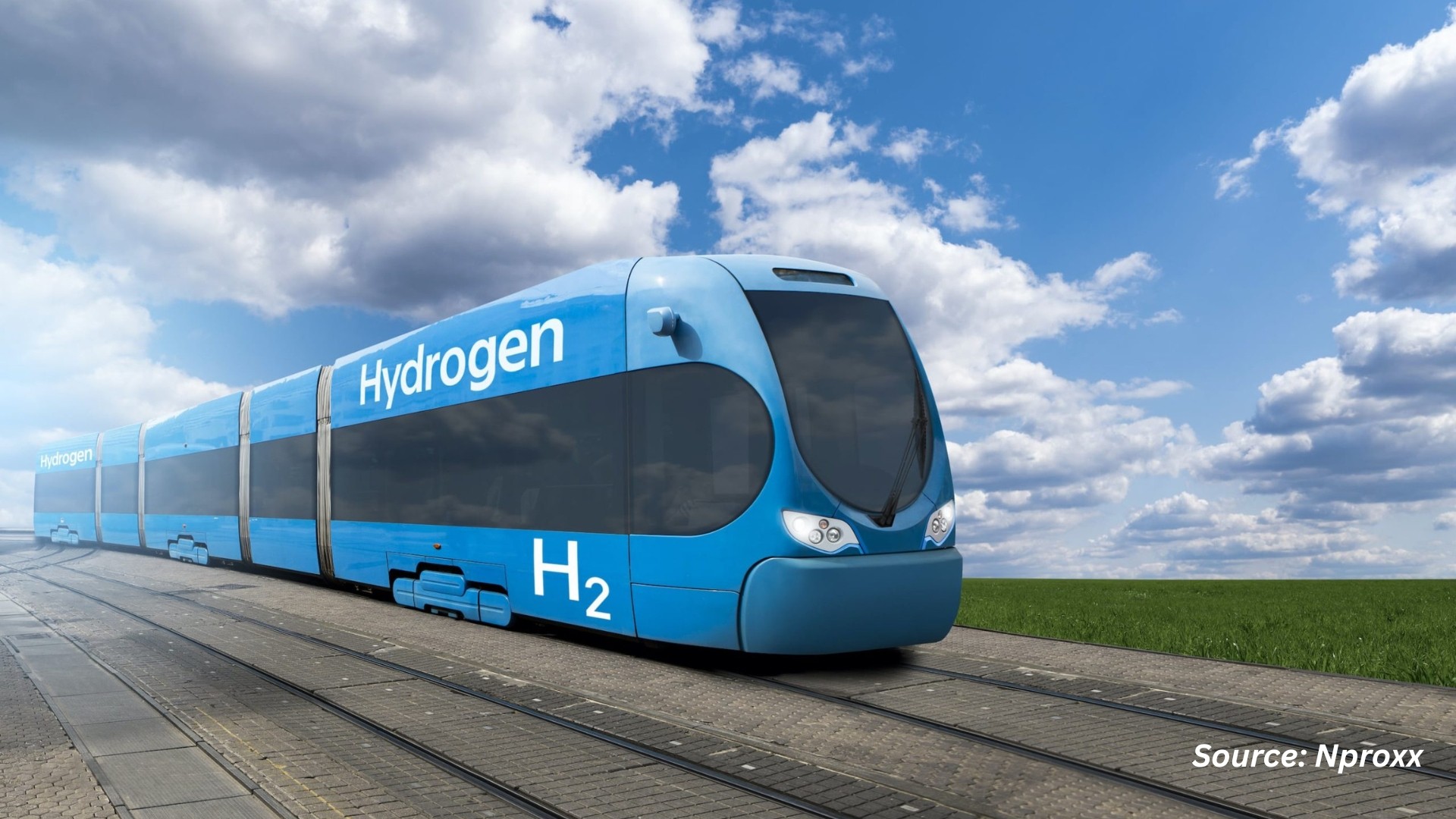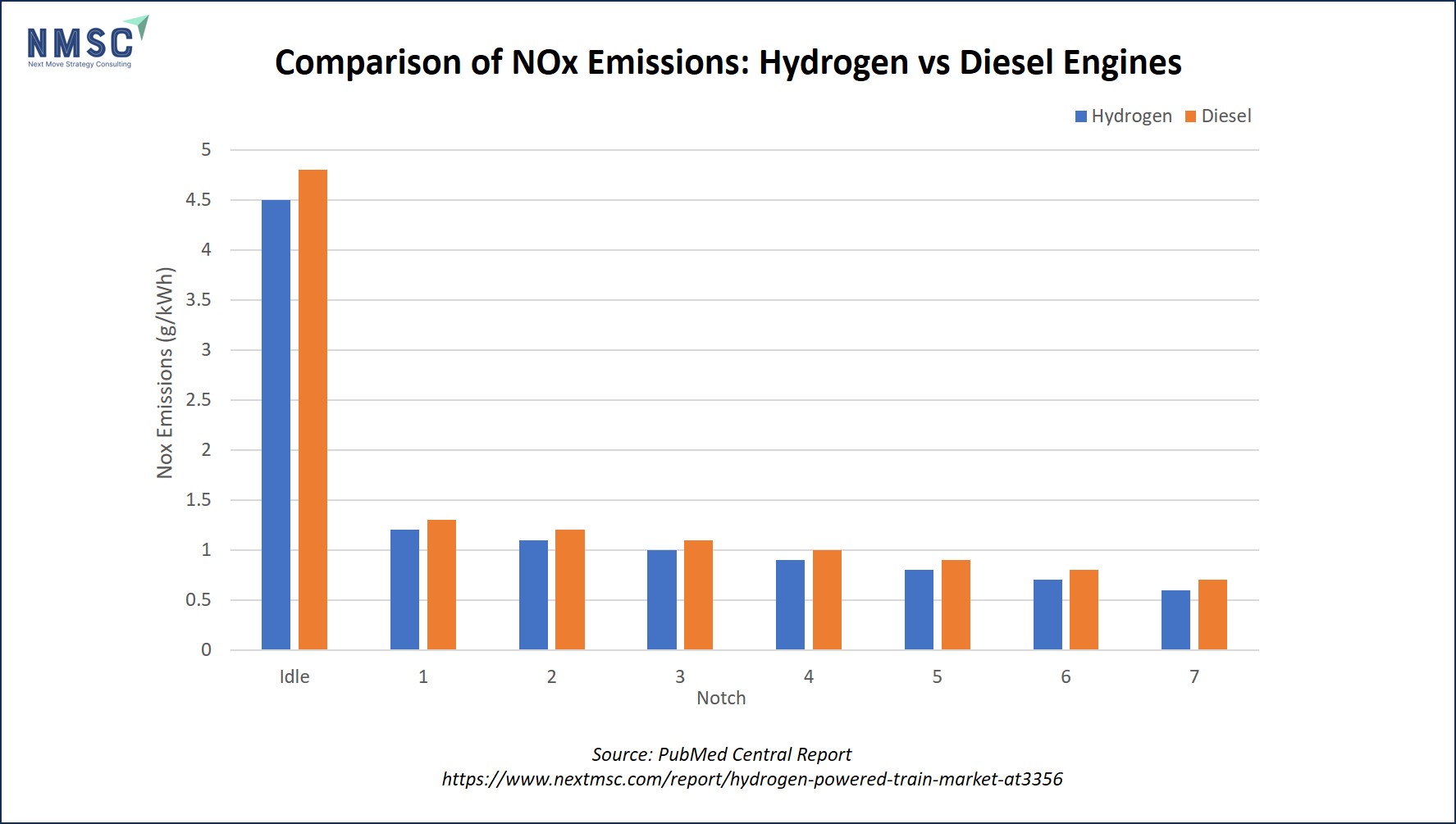Hydrogen Powered Trains: Unlocking Market Drivers and Opportunities in 2024
Published: 2025-09-10

Hydrogen powered trains are no longer a futuristic concept—they are rapidly becoming a practical solution to the rail industry’s growing challenges. The United States has launched its first hydrogen-powered train, marking a significant step in the global push to decarbonize rail transport. While hydrogen trains present notable advantages, they also face challenges related to fuel production. Both hydrogen and electric technologies are anticipated to play essential roles in achieving net-zero emissions in the rail sector. In support of this transition, the World Economic Forum’s Advanced Energy Solutions community is actively working to accelerate the large-scale adoption of clean energy solutions, including hydrogen, advanced nuclear power, energy storage, and carbon reduction technologies.
1. Environmental Mandates and Regional Deployments: A Major Market Driver
Starting next year, residents and tourists in Valcamonica, an Alpine region in northern Italy, will have access to hydrogen-powered trains. According to Reuters, this groundbreaking initiative—the first in Italy—represents a major step toward adopting hydrogen fuel for rail transport, backed by a €367 million ($396 million) investment, despite the considerable production and operational expenses involved.
Key Insights from Reuters (2024):
Project Overview:
-
Italy’s first hydrogen-powered rail project is set to begin operations in Valcamonica, a mountainous region in northern Italy, starting next year.
-
The initiative represents a major step toward cleaner rail transport in the country, with an estimated total investment of €367 million ($396 million).
Current Situation:
-
The region’s existing rail services currently rely on diesel-powered trains, which are to be replaced with 14 zero-emission hydrogen-powered trains.
-
These trains are manufactured in Italy by a local unit of Alstom (ALSO.PA), a French multinational company specializing in rail transport technologies.
Alignment with EU Energy Strategy:
-
The project supports the European Union’s energy transition goals.
-
It utilizes green hydrogen, produced through water electrolysis powered by renewable energy, as an alternative to fossil fuels in the transportation sector.
Project Feasibility & Cost Considerations:
-
Andrea Gibelli, Chairman of FNM (FNMI.MI), the regional transport authority overseeing the project, acknowledged the project’s high costs.
-
However, he emphasized that hydrogen-powered trains are the most practical solution for the 110-kilometre (70-mile) stretch of mountainous terrain in Valcamonica.
-
Gibelli noted that although electric trains are generally cheaper to operate, the cost of electrifying this specific route would be around €450 million—higher than the hydrogen project—and would also involve significant disruptions to the rail line.
Investment Breakdown:
-
Approximately half of the total project cost has been allocated for purchasing the Coradia Stream hydrogen trains, each consisting of four carriages.
Hydrogen Technology in Europe:
-
Similar hydrogen-powered Alstom trains are already operational in Lower Saxony, Germany, demonstrating proven use in other European markets.
Cost of Hydrogen Fuel & Economic Viability:
-
Despite hydrogen fuel costing approximately €10–15 per kilogram, making it less competitive than traditional fuels, Gibelli argued that this solution remains economically reasonable.
-
He explained that the project avoids the higher costs of line electrification and brings environmental benefits.
Hydrogen Production & Supply:
-
To address hydrogen supply challenges, on-site electrolysers have been installed for local production of green hydrogen using renewable electricity.
Funding & Fares:
-
The project’s financing comes from the Lombardy regional government and the EU’s Recovery and Resilience Plan (PNRR), ensuring no increase in passenger fares.
-
The financial structure ensures that the costs are isolated from fare revenues, maintaining affordability for travelers.
2. Community-Level Sustainability Gains: A Localized Opportunity
According to The Guardian (2024) in California, the nation’s first hydrogen powered passenger train began operating with a focus on local air quality improvements.
Key Findings from The Guardian (2024):
-
First hydrogen-powered passenger train in North America: San Bernardino’s "Zero Emission Multiple Unit" (Zemu) is set to run on the Arrow Corridor between Redlands and San Bernardino.
-
Zero emission operation: Powered by a hydrogen fuel cell and battery hybrid system, Zemu emits only water vapor.
-
Built to meet safety standards: It is the first hydrogen train in North America designed to meet Federal Railroad Administration (FRA) requirements.
-
Targeting poor air quality: The train operates in an area that “suffers from some of the worst air quality rates in the country”.
3. Global Expansion of Hydrogen Rail Projects
Beyond the United States and Italy, governments worldwide are advancing hydrogen train initiatives as part of their decarbonization agendas. According to the World Economic Forum (2022, widely cited in 2024 discussions), regional efforts across Europe and Asia are underway to adopt hydrogen rail technologies.
Key Global Developments from WEF (2022):
-
Germany pioneered hydrogen rail by introducing the world’s first hydrogen-powered train in 2018, leading global efforts in this sector.
-
The United Kingdom is actively testing hydrogen trains, aligning with its goal to eliminate diesel-powered trains by 2040.
-
France has placed orders for hydrogen-powered trains for regional routes, with plans to commence operations by 2025, highlighting strong momentum in hydrogen rail adoption.
Hydrogen trains are particularly attractive for non-electrified tracks where full electrification would be too expensive, creating significant market opportunities for manufacturers and operators alike.
4. Investment Opportunities in Hydrogen Infrastructure
Scaling hydrogen rail technology requires substantial investments in infrastructure. According to McKinsey & Company (2024), critical focus areas include hydrogen fuel production, storage, and refueling facilities.
McKinsey’s Key Market Recommendations (2024):
-
Decarbonization Targets: Major railway companies in North America and Europe aim to cut CO₂ emissions by 25% to 36% by 2030 through measures such as modernizing fleets, increasing train weight and length, improving energy efficiency, and using greener materials like low-carbon steel.
-
Alternative Energy Sources: To reduce emissions, railways are adopting strategies like electrifying rail lines, utilizing biofuels, switching to hydrogen or battery-powered trains, and enhancing energy efficiency in stations.
-
Biofuel Initiatives: Despite higher costs and infrastructure adjustments, several railway companies—especially in the U.S. and Europe—are piloting biofuels such as biodiesel blends and renewable hydro-treated vegetable oil (HVO), continuing a trend that began with examples like Prignitzer Eisenbahn (PEG) in Germany.
Railway Decarbonization Strategies & Targets
|
Category |
Details |
|
CO₂ Emission Reduction Targets |
25%–36% reduction by 2030 (North America & Europe railways) |
|
Fleet & Operational Measures |
Modernize fleets, increase train weight & length, optimize energy consumption, use greener steel |
|
Energy Alternatives |
Electrification, hydrogen trains, battery-powered trains, biofuels |
|
Biofuel Usage |
Use of biodiesel blends & renewable hydro-treated vegetable oil (HVO) in pilot projects |
|
Example |
Prignitzer Eisenbahn (Germany) using biofuels since 2006 |
5. Public Health as a Market Catalyst
Hydrogen trains offer public health advantages that can serve as powerful drivers for adoption. A scientific study published in PubMed Central (2024) emphasizes that replacing diesel with hydrogen significantly reduces harmful air pollutants, particularly particulate matter, thereby improving respiratory health in communities near rail lines.
Key Findings from PubMed Central (2024):
-
Reduced exposure to particulate matter, lowering the risk of respiratory diseases.
-
Improved air quality at rail stations and surrounding areas.
-
Some studies also suggest reduced noise and vibrations in hydrogen-powered trains compared to diesel models, though further research is ongoing in this area.
Conclusion: Market Forces Are Powering Hydrogen Rail Forward
Hydrogen powered trains are not just a technological innovation—they are a response to powerful market drivers and societal demands. From regulatory shifts and fuel cost pressures to sustainability and public health benefits, these trains offer diverse opportunities for rail operators, investors, and governments alike.
Summary of Key Drivers and Opportunities:
-
Stringent environmental mandates are accelerating hydrogen train adoption.
-
Hydrogen trains may help railways mitigate risks from fuel price volatility.
-
Governments are investing heavily in hydrogen infrastructure and research.
-
Hydrogen trains provide measurable public health and community benefits.
-
Investment opportunities span technology development, infrastructure, and operations.
With strategic investments and policy alignment, hydrogen powered trains are well positioned to become a cornerstone of the next generation of rail transport.
About the Author
 Karabi Sonowal is an experienced SEO Executive and Content Writer in digital marketing. She excels in SEO, content creation, and data-driven strategies that boost online visibility and engagement. Known for simplifying complex concepts, Karabi creates impactful content aligned with industry trends.
Karabi Sonowal is an experienced SEO Executive and Content Writer in digital marketing. She excels in SEO, content creation, and data-driven strategies that boost online visibility and engagement. Known for simplifying complex concepts, Karabi creates impactful content aligned with industry trends.
About the Reviewer
 Sanyukta Deb is a seasoned Content Writer and Team Leader in Digital Marketing, known for her expertise in crafting online visibility strategies and navigating the dynamic digital landscape. With a flair for developing data-driven campaigns and producing compelling, audience-focused content, she helps brands elevate their presence and deepen user engagement. Beyond her professional endeavors, Sanyukta finds inspiration in creative projects and design pursuits.
Sanyukta Deb is a seasoned Content Writer and Team Leader in Digital Marketing, known for her expertise in crafting online visibility strategies and navigating the dynamic digital landscape. With a flair for developing data-driven campaigns and producing compelling, audience-focused content, she helps brands elevate their presence and deepen user engagement. Beyond her professional endeavors, Sanyukta finds inspiration in creative projects and design pursuits.
















Add Comment